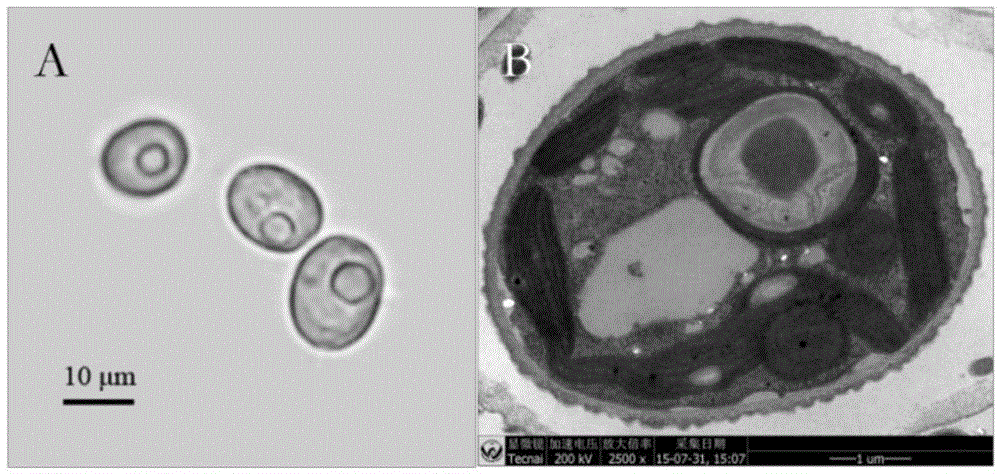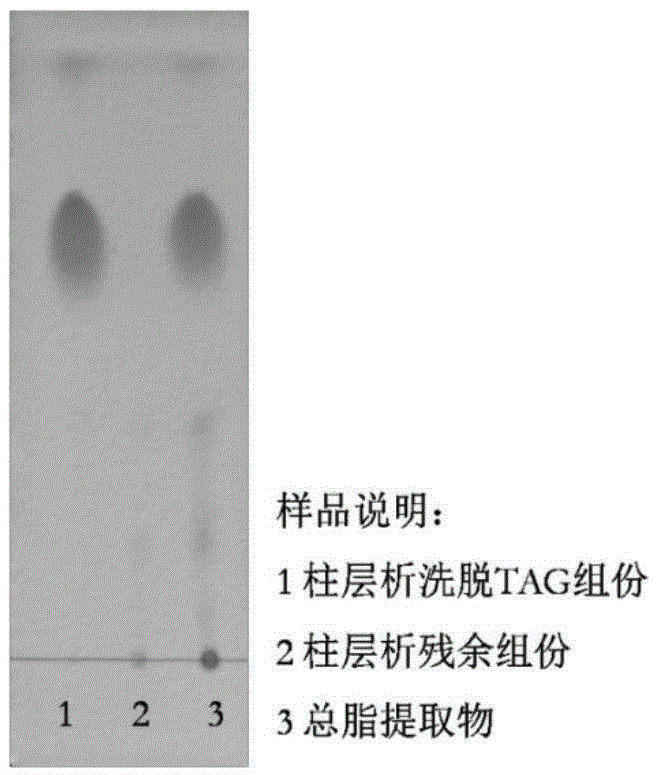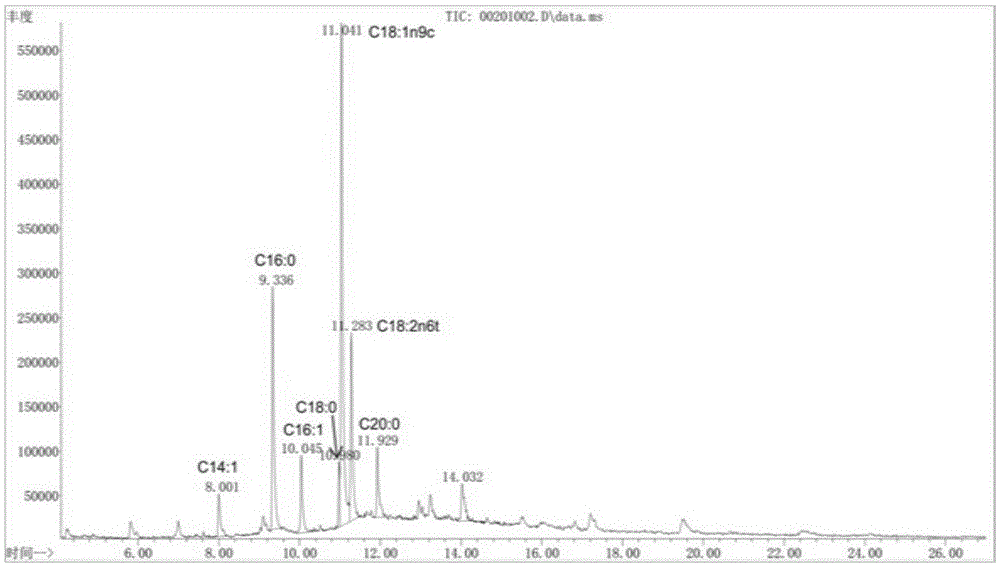Graesiella sp. WBG-1 as well as isolation and screening method and application thereof
A technology of oil balls and algae, applied in the fields of microalgae resources, energy and environmental protection, which can solve the problems of high energy consumption, easy pollution, and poor environmental adaptability, and achieve high separation efficiency, wide application range, and pertinence strong effect
- Summary
- Abstract
- Description
- Claims
- Application Information
AI Technical Summary
Problems solved by technology
Method used
Image
Examples
Embodiment 1
[0042] Embodiment 1: the separation and screening method of Oleococcus Graesiellasp.WBG-1, its steps are:
[0043] A method for separation and screening of Oleococcus Graesiellasp.WBG-1, the steps of which are:
[0044] 1. Water sample collection: A plankton collector made of 400-mesh gauze tulle draws the word "∞" below the water surface to enrich algae cells. The collected samples are placed in sterile bottles, and a small amount of concentrated BG-11 is added for cultivation. Base, and then stand for 3 days under low light, and then carry out the separation of algal species. The water samples in this example were collected from Yongsheng County, Yunnan Province.
[0045] 2. Separation and purification:
[0046] (1) Search and separation of target algae cells: Find the algae cells to be separated (target algae cells) under a 10X or 20X microscope, then bring the micropipette (0.1mm inner diameter) close to the target cell and lift it up quickly. The siphon action rapidly ...
Embodiment 2
[0060] Example 2: Expanded cultivation of Oleococcus Graesiellasp.WBG-1 and its use in the production of microalgae oil (biodiesel feedstock).
[0061] A kind of application of oleococcus Graesiellasp.WBG-1 in microalgae biodiesel raw material, its steps are:
[0062] 1. Reactor preparation: first wipe the inner surface of the incubator with 75% ethanol three times, then inject 40 liters of culture water that has been boiled and sterilized and cooled to room temperature, and put the boiled and sterilized vent tube and sand core gas diffuser into the incubator In the process, turn on the gas source and start ventilating (air flow rate 3L / min), and the gas to be ventilated is air / carbon dioxide mixed gas (CO 2 / air=1 / 99, V / V) and sterilized by filtration through a 0.22 μm pore size filter.
[0063] 2. Medium preparation: According to the improved BG11 medium formula 1, add the medium components one by one, stir thoroughly after each component is added, and then add the next com...
Embodiment 3
[0069]Example 3: Expanded culture of Oleococcus Graesiellasp.WBG-1 and its use in the production of microalgae protein.
[0070] A kind of application of Oleococcus Graesiellasp.WBG-1 in microalgae protein production, its steps are:
[0071] 1. Reactor preparation: first wipe the inner surface of the incubator with 75% ethanol three times, then inject 40 liters of culture water that has been boiled and sterilized and cooled to room temperature, and put the boiled and sterilized vent tube and sand core gas diffuser into the incubator In the process, turn on the gas source and start to ventilate (air flow rate 3L / min), and the gas to be ventilated is air / carbon dioxide mixture (CO 2 / air=1 / 99, V / V) and sterilized by filtration through a 0.22 μm pore size filter.
[0072] 2. Medium preparation: According to the improved BG11 medium formula 2, add the medium components one by one, stir thoroughly after each component is added, and then add the next component to prevent precipitat...
PUM
| Property | Measurement | Unit |
|---|---|---|
| diameter | aaaaa | aaaaa |
| height | aaaaa | aaaaa |
Abstract
Description
Claims
Application Information
 Login to View More
Login to View More - R&D
- Intellectual Property
- Life Sciences
- Materials
- Tech Scout
- Unparalleled Data Quality
- Higher Quality Content
- 60% Fewer Hallucinations
Browse by: Latest US Patents, China's latest patents, Technical Efficacy Thesaurus, Application Domain, Technology Topic, Popular Technical Reports.
© 2025 PatSnap. All rights reserved.Legal|Privacy policy|Modern Slavery Act Transparency Statement|Sitemap|About US| Contact US: help@patsnap.com



